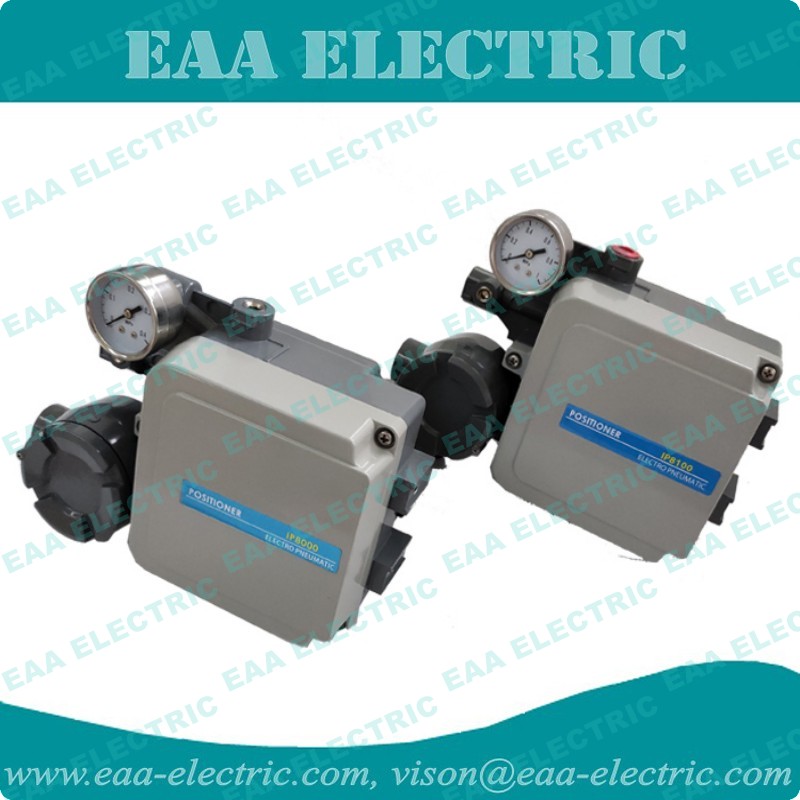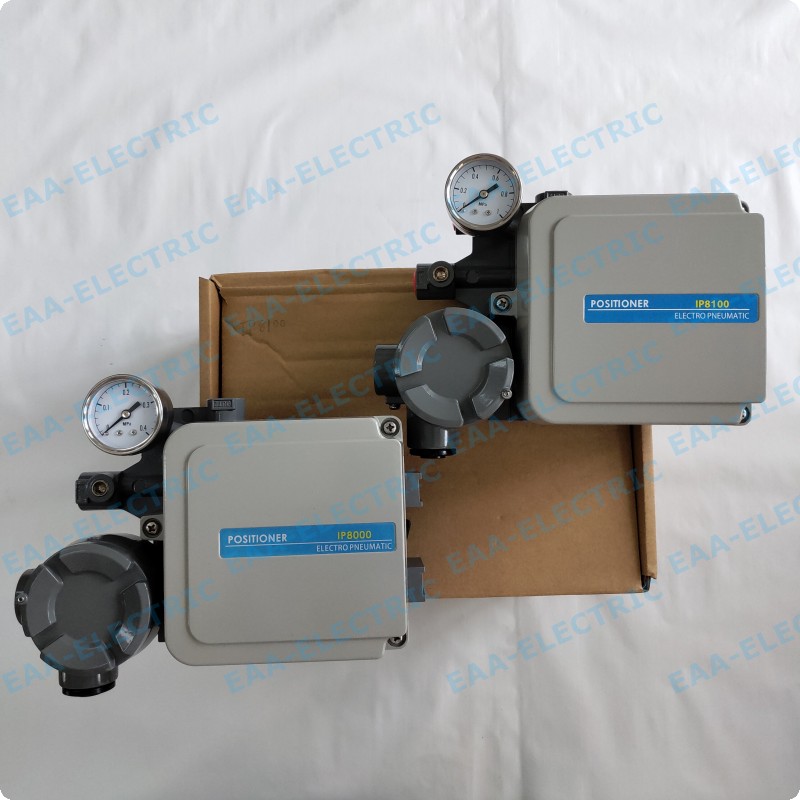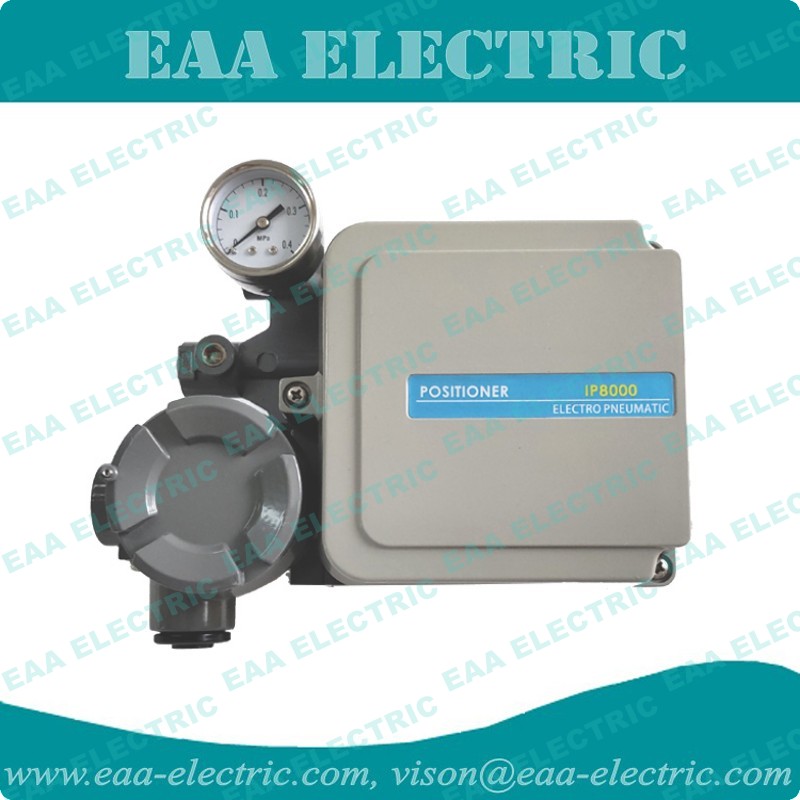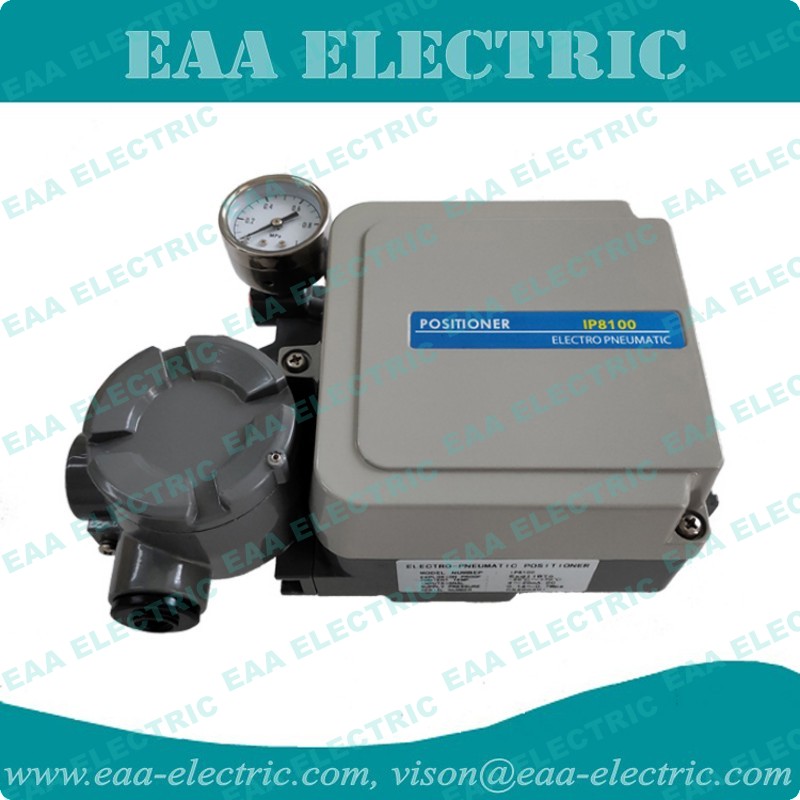SMC Type Valve Positioner
IP8000/8100 Electro Pneumatic Valve Positioner
- OEM Support
- China Factory
- Best Price
- Quickest Delivery
- Product description: China leading and biggest professional Electro Pneumatic Valve Positioner and Electro Pneumatic Transducer OEM Manufacturer.
IP8000/8100 Electro Pneumatic Valve Positioner-Data Sheet (PDF Download)
The IP8000 E/P positioner is more compact than the IP6000 with improved visibility of the pressure indicator. Other features include an improved enclosure protection IP65, interchangeable mounting, excellent shock and vibration performance, and a 1/2 split range available by simple span adjustment.
- Output current (4-20mADC) realizes remote position detecting (rotary type)
- Vibration resistance: No resonances 5 to 200Hz
- Dust resistance: Conforms to JIS F8007 IP65
- Pressure gauge O.D. 43
- Accessories include: Output restriction w/pilot valve, fork lever joint, compensation spring, w/external scale plate
- IP8100, Electro-Pneumatic Positioner, Rotary type. Output current (4-20mADC) realizes remote position detection. External scale plate is installed for easy reading of valve position. The pressure gauge diameter is increased to large size for easy reading. Interchangeable with IP6#00 series.
IP8100, Electro-Pneumatic Positioner, Rotary type. Output current (4-20mADC) realizes remote position detection. External scale plate is installed for easy reading of valve position. The pressure gauge diameter is increased to large size for easy reading. Interchangeable with IP6#00 series.


- The difference between the electro pneumatic converter and the electro pneumatic valve positioner
When manual operator, PID regulator, DCS or PLC uses a pneumatic adjustment valve to complete the process control, it is necessary to turn the electrical signal to the gas signal to control the pneumatic actuator. Meeting this feature has an electro pneumatic converter and electro valve positioner, but since the structure and function of both instruments are different, there is also a difference in the use of electro pneumatic converters and electro pneumatic valve positioners.
Electro pneumatic converter
The input current signal of the electro pneumatic converter is proportional to the output pressure signal. That is, when the input signal changes from 4-20 mA, the output pressure of the electro pneumatic converter is also changed from 20-100 kPa to convert the current signal to the air pressure signal. The electro pneumatic converter is equivalent to a 1: 1 amplifier, but it is only the electrical signal. Since the electro pneumatic converter is not mechanically connected to the adjustment valve, it has the advantages of low, installation, debugging, maintenance convenient than the electro pneumatic valve positioner, etc., which should be preferred under the same conditions.
The electro pneumatic converter is installed directly on a pneumatic regulating valve. It does not require the installation of the feedback rod, but because there is no feedback link, it cannot be a closed-loop control system, which has a problem with the control accuracy, rarely used alone! Usually the electro pneumatic converter is used to support the pneumatic positioner to achieve accurate positioning of the valve.
The electro pneumatic valve positioner is actually a combination of electro pneumatic converters and valve positioner functions. Therefore, the function and function of the electro pneumatic valve positioner has a further extension. If it is used to improve the linearity of the valve position; due to its impact of the friction force of the valve stem and the elimination of the imbalance of the regulator, it is suitable for high pressure media and Application of high pressure differences; applications on large diameter regulating valves; applications on high and low temperature dielectric regulating valves; can also be used for rapid adjustment, and want to improve regulating valve flow characteristics.
CATEGORIES
LATEST NEWS
- Introduction of Valve Positioner2016-01-09
- Action Principle of Valve Positioner2017-03-30
- Type of Valve Positioner2021-12-29
- New website online2021-12-29
- Working Principle and Basic Composition of Pneumatic Valve2021-12-31
CONTACT US
Contact: Vison Chan
Phone: 0086-15858563760
Tel: 0086-577-65165096
Email: vison.eaa@gmail.com , vison@eaa-electric.com
Add: EAA Central Industrial Zone,Wenzhou,Zhejiang Province,China






